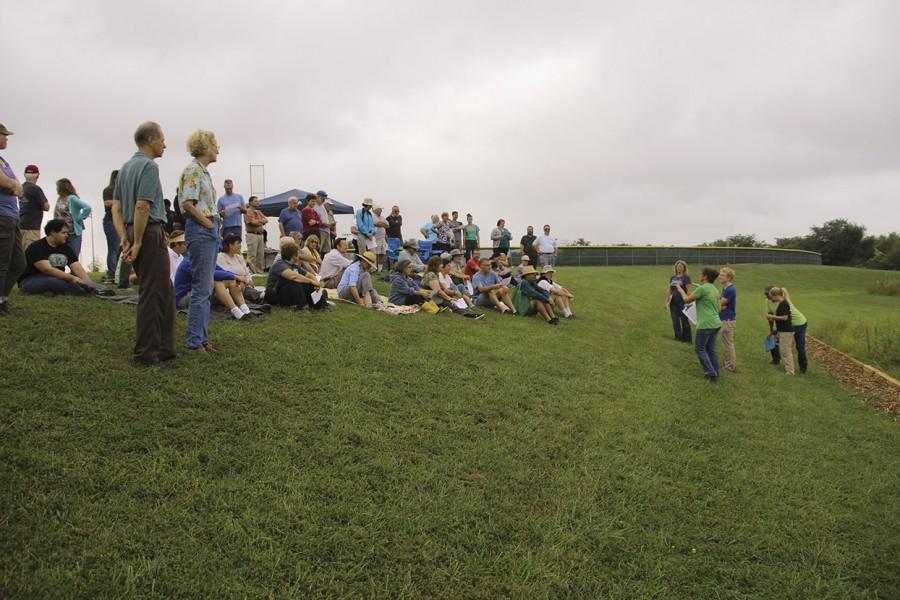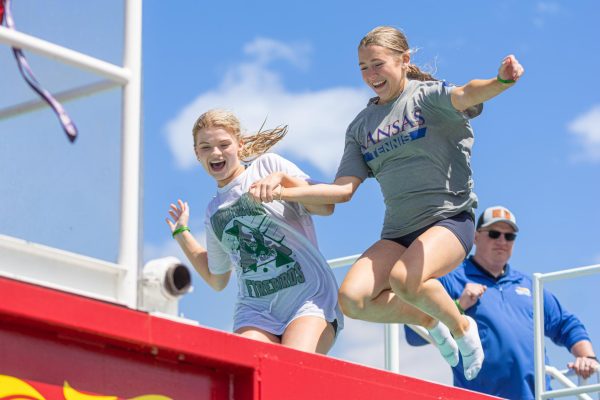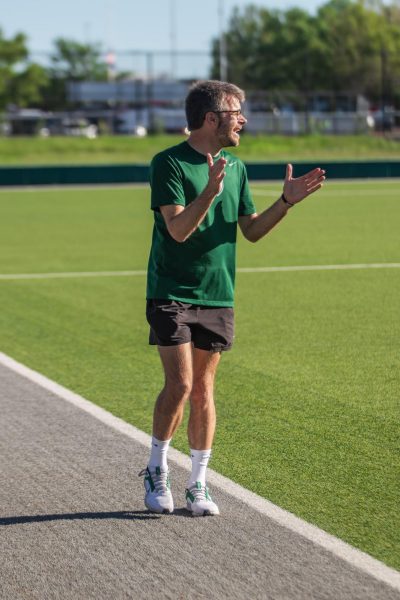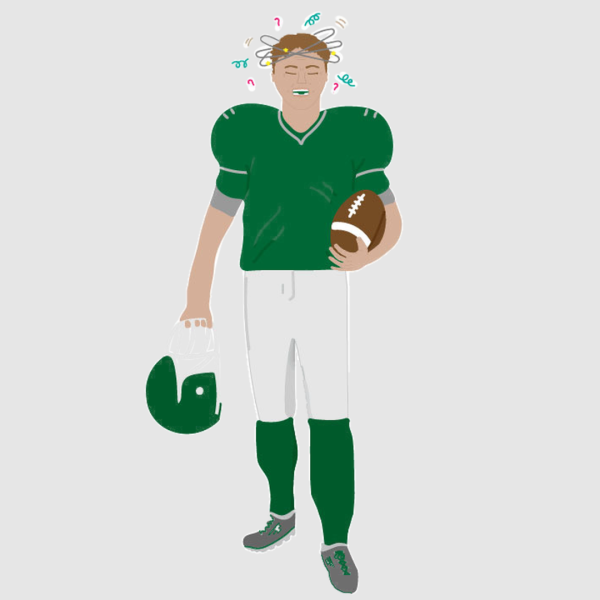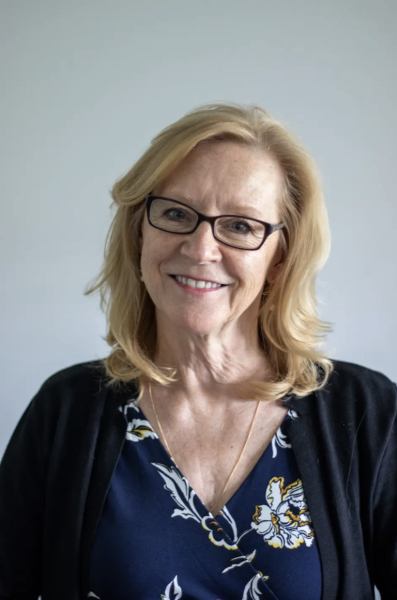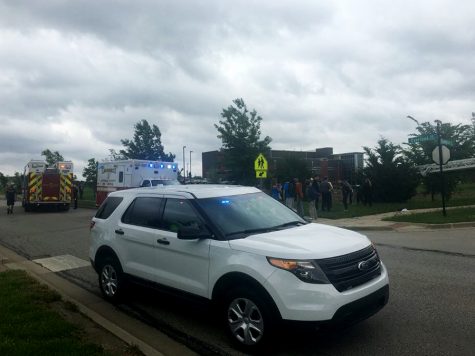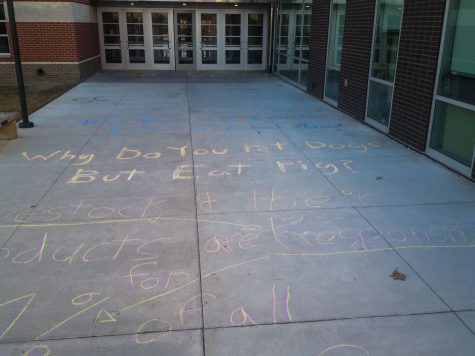Prairie restoration project connects KU and Free State
Bystanders gather to learn about the prairie restoration project behind Free State.
Two years ago Free State science teacher Julie Schwarting and University of Kansas professor Dr. Helen Alexander saw potential in the abandoned football field behind Free State. Schwarting and Alexander then started a project aimed at getting students outside and excited about science, resulting in a great collaboration between the two schools.
“The initial goal of the prairie restoration was to create an environment where students could go outside and gather real data and enjoy the outdoors,” Schwarting said. “(And) be able to use the site and collaborate with KU and graduate students there.”
Alexander believes the project helps in other fields than just science: KU students interested in K through 12 education have been able to contribute as well.
“There are a lot of faculty members and students at KU who are interested in K through 12 education in the larger community but they don’t really know where to start,” Alexander said. “So by creating this project, we are providing these connections and it is really easy for people to move back and fourth.”
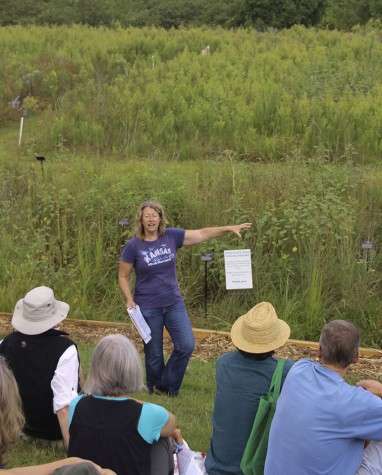
Free State science teacher shows the prairie at the prairie restoration walk through.
The prairie is currently home to over 40 species of plants. Some grew naturally while others were planted by Free State students when the project started in 2013.
“We have an experiment going (where) we have different plots with different species in them, some plots just have six native grasses – the big six, like big bluestem, switchgrass, and indiangrass,” Schwarting said. “Some of the plots have some native forbs as well, and we want to see how those different plots change over time. We have about 43 different species right now.”
There are two distinctive areas involved in the project. The first area is referred to as the “prairie demonstration site” and the second is the main area. The main area is much larger than the prairie site and is less maintained.
“The main area, the area in the abandoned football field, is in the early stages of prairie restoration, and that’s to be expected,” Alexander said. “We started that using seed, seed takes a long time, and when anyone starts a project like that the first few years you’re dominated by weedy plants. As the perennial prairie plants get more established, we can also have fires out there for management, that will favor the prairie plants and start looking more like a prairie.”
Senior Jackson Kramer, who took care of the prairie over the summer, thinks the project helps bring awareness to problems in the environment.
“(Projects like) these are really important because the more we know about the natural world the more we can do to help it,” Kramer said. “We have a lot of global warming issues, a lot of deforestation issues. If we know how the world works through something as simple as a prairie restoration site, we can combine those with other research places and help out the world a little bit.”
There are many new opportunities in the works for the project. Both Free State and KU students will be out there in the coming weeks working on various projects. Schwarting’s AP Environmental students are currently working on a research project with Ben Sykes at KU.
“We are looking at soil and fungi that live in the roots of plants and hopefully we will have some data that we might be able to publish sometime,” Schwarting said. “We are going to be taking a lot of students out there to do research, to observe nature, and hopefully we will develop more and more collaborations with KU researchers so that we can see how science really works.”
According to Schwarting, students who want to get involved should speak to their science teachers or join environmental club.
“I’m hoping that it will get people interested in how the systems work in nature and give them an opportunity to see that they can make changes in their own environment, that might affect the bigger picture,” Schwarting said. “I think the diversity is amazing at Free State and this is an opportunity for any student to get involved in an outdoor project.”



